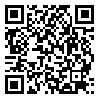Volume 5, Issue 3 (Occupational Medicine Quarterly Journal 2013)
tkj 2013, 5(3): 20-29 |
Back to browse issues page
Download citation:
BibTeX | RIS | EndNote | Medlars | ProCite | Reference Manager | RefWorks
Send citation to:



BibTeX | RIS | EndNote | Medlars | ProCite | Reference Manager | RefWorks
Send citation to:
Mahdavi N, Motamedzade M, Jamshidi A, Moghimbeigi A, Heidari Moghaddam R. Objective and subjective assessment of upper trapezious muscle fatigue in carpet weaving workers. tkj 2013; 5 (3) :20-29
URL: http://tkj.ssu.ac.ir/article-1-374-en.html
URL: http://tkj.ssu.ac.ir/article-1-374-en.html
1. Hamadan University of Medical Sciences , motamedzade@yahoo.com
Abstract: (10362 Views)
Background: Nearly 8.5 million of employees in Iran are carpet-weavers and musculoskeletal disorders especially in their shoulder region are prevalent. As regards muscle fatigue is a risk factor for musculoskeletal disorders its reduction may improve health promotion among the weavers and also lead to improved quality and quantity of this national product. Muscle fatigue manifestations in electromyography are mean power frequency decrease and root mean square increase in time. This study aimed to assess muscle fatigue in the upper trapezious of carpet-weavers.
Methods: In this cross-sectional study, regarding inclusion and exclusion criteria, 12 carpet-weavers (9 females, 3 males) were selected. During 210 minutes carpet weaving, data were collected via surface electromyography and body part discomfort rate scale. Electromyography parameters and body part discomfort rate scale were analyzed with repeated measures ANOVA (sex and experiences as independent variable).
Results: During 210 minutes carpet weaving, mean power frequency in right and left upper trapezius decreased and P-value=0.002 and P-value=0.001 was significant respectively, but root mean square and body part discomfort rate changes were not significant.
Conclusion: Assessment of objective and subjective development of muscle fatigue, showed significant decrease in mean power frequency, but root mean square and body part discomfort rate have not significant changes. No obvious significant correlation was found between objective and subjective muscle fatigue assessments.
Type of Study: Research |
Subject:
Ergonomics
Received: 2013/10/29 | Accepted: 2013/11/12 | Published: 2013/11/12
Received: 2013/10/29 | Accepted: 2013/11/12 | Published: 2013/11/12
Send email to the article author
| Rights and permissions | |
 |
This work is licensed under a Creative Commons Attribution-NonCommercial 4.0 International License. |





